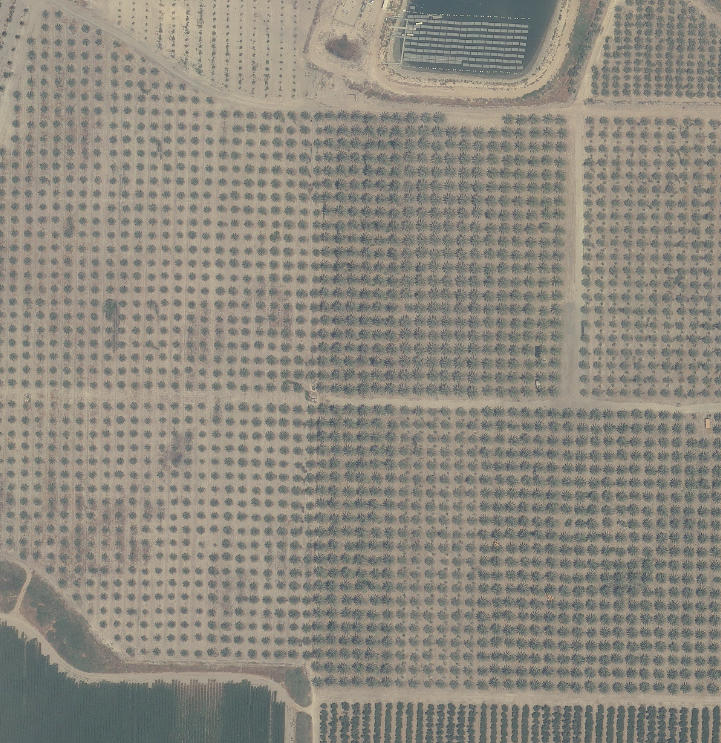Tel Rehov Trench
 Tel Rehov Trench
Tel Rehov Trench- Green line - Trench TR-4
- Yellow line - Subsurface trace of fault
- Red line - Seismic Line GP-5036 (to the south - bottom of image)
- Red line - Seismic Line GP-5037 (to the north - top of image)
click on image to explore this site on a new tab in Google Earth
Tel Rehov Archaeoseismic Site Webpage
- from Tel Rehov archaeoseismic Site Webpage - click link to open new tab
Aerial Views and Other Material
Aerial Views
- Location of Tel Rehov Trench in Google Earth
- Location of Tel Rehov Trench
Trench Log
Location Map
Trench Log
Seismic Lines
Location Maps
Google Earth
Mazar et. al. (2020 v.1)
 Figure 2.7a
Figure 2.7aThe surface scarp system and subsurface trace of the underlying marginal fault of the DSR (dashed line), as detected in geophysical surveys by Gardosh and Bruner 1998 and Bruner, Zilberman and Amit 2002. The traces of seismic lines GP-5036 and GP-5037 are marked on the aerial photo.
Mazar et. al. (2020 v.1)
Seismic Line GP-5037 (to the north)
Seismic Line GP-5036 (to the south)

Figure 7
Seismic Line GP-5036. Note the lack of seismic reflectors on the eastern side of the main fault.
Zilberman et al (2004)
Reconstruction of Tectonic Events

Figure 20
Fig. 20 Reconstruction of the main tectonic events in the fault exposed in Trench TR-1.
- Deposition of the upper part of the tufa sequence (20-30 ka)
- Displacement of the sequence accompanied by truncation of the upper block (between 20-30 ka and 2700 Y.B.P.)
- Displacement of about 1.5 m (around 2700 years before present
- Deposit of colluvium (Colluvium 1)
- Development of incipient soil during a short stable period
- Displacement of about 1.5 m (around 2600 years before present)
- Deposit of colluvium (Colluvium 2)
- Deposition f the Upper Unit. Fracturing of the entire sequence.
Zilberman et al (2004)

Figure 20
Fig. 20 Reconstruction of the main tectonic events in the fault exposed in Trench TR-1.
- Deposition of the upper part of the tufa sequence (20-30 ka)
- Displacement of the sequence accompanied by truncation of the upper block (between 20-30 ka and 2700 Y.B.P.)
- Displacement of about 1.5 m (around 2700 years before present
- Deposit of colluvium (Colluvium 1)
- Development of incipient soil during a short stable period
- Displacement of about 1.5 m (around 2600 years before present)
- Deposit of colluvium (Colluvium 2)
- Deposition f the Upper Unit. Fracturing of the entire sequence.
Zilberman et al (2004)
Master Seismic Events Table
References
Mazar, A. and N. Panitz-Cohen (2020). "TEL REḤOV: A BRONZE AND IRON AGE CITY
IN THE BETH-SHEAN VALLEY VOLUME I: INTRODUCTIONS, SYNTHESIS AND EXCAVATIONS
ON THE UPPER MOUND." Qedem 59: III-416.
Zilberman, E., Amit, R., Bruner, I., Nahmias, Y. (2004). Neotectonic and paleoseismic study : Bet She'an Valley. Jerusalem, Geological Survey of Israel
kmz's
- download these files into Google Earth on your phone, tablet, or computer
- Google Earth download page
| kmz | Description | Reference |
|---|---|---|
| Right Click to download | Master Tel Rehov Archaeoseismic and Paleoseismic file | various |


